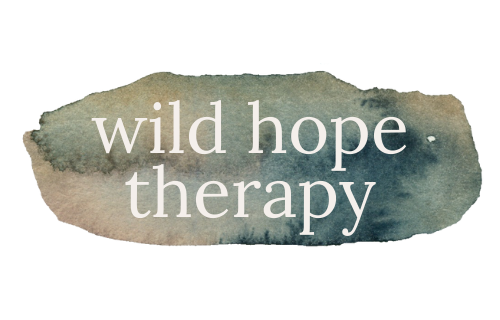november is Native American Heritage Month
Madison Eagle, LSW, provides an Indigenous approach to therapy, which provides space for processing the effects of systemic and institutional oppression on communities of color and all marginalized identities. In this post, Madison reflects on the history of Thanksgiving and experience of Indigenous people in the Ohio area.
Content Warning: genocide, oppression
November is recognized as Native American Heritage Month[1], it’s a time to bring awareness to issues facing Indigenous peoples and the history of colonialism in our country. This week families will also be gathering to celebrate Thanksgiving. It is a time to be with loved ones, to show gratitude, and to eat an excessive amount of food. For many Indigenous peoples and families, it is a day of mourning[2]. A day where we gather to honor ancestors and Indigenous resistance to colonialism from the past, present and future. In the United States we are taught a simplistic and false narrative about the origins of Thanksgiving as a gathering between pilgrims and Native Americans as friends to celebrate and express gratitude[3]. In the historical record, the actual Thanksgiving is highly debated, one date that many focus on as a potential origin was the 1621, which a gathering did happen between colonizers and the Wampanoag tribe, however the time was marked with massacres, disease and violence toward Indigenous tribes.
In the reconstruction era, Abraham Lincoln utilized a mythological version of Thanksgiving that we have come to know today, as the happy and friendly dinner between two groups that had many differences. This narrative was meant to promote unity between the North and South following the Civil War[3]. This selective historical memory goes beyond Thanksgiving to Columbus Day, and other historical moments. It is these false stories that have contributed to the invisibility of Indigenous peoples in the present day. Painting a picture that Indigenous tribes are relics of the past, that the expansion of America was destiny and was morally righteous.
Ohio is geographically and intellectually distanced from Indigenous communities and issues. Ohio has no Federally recognized tribal nations, and the population of Indigenous peoples here is .03% or about 35,398 people based on the 2020 census results.[4] These numbers enable a perceived invisibility for Indigenous families and communities.
Despite the low population numbers, Ohio has many markers that allude to the history of the land once being inhabited by only Indigenous peoples. We have named cities, counties, landmarks by using variations of Indigenous languages:
Cuyahoga: Mohawk, Meaning “Crooked River”; Seneca “place of the jawbone”[5]
Wapakoneta: Shawnee; Meaning: “Place of White Bones” [6]
Sandusky: Wyandot; Meaning “Water (within pools of water)” or “At the Cold Water” [7]
Ohio: Seneca; Meaning “Great River”[8]
Before colonialism and European contact, this area was home to the Shawnee, Potawatomi, Delaware, Miami, Seneca, Peoria, Ojibwe and other migratory Tribal Nations[9]. And their ancestors were the Moundbuilders. They created huge, beautiful, ingenious mounds, cities, gathering points, and trade markets. Some of these mounds have been preserved and we are able to visit them to see the mastery, and brilliant scientific feats that Indigenous people put into creating these works. The Newark Earthworks[10] and Serpent Mound[11] are remarkable examples of their ingenuity. The mounds were built in alignment with astrological movements, eclipses, solstices, constellations. These were massive sites, requiring planning, mapping and coordination dated to about 320 BCE and utilized until approximately 1100 CE.
The land that we call our homes now, has always been and will always be Indigenous land. The United States and European governments stripped the people from this land through the 1795 Treaty of Greenville[12] and then the forced and violent removal of Tribes in the 1830 Indian Removal Act[13]. While the original peoples were pushed west, they left their marks here to never be forgotten.
One of the struggles of Indigenous peoples in the United States and Ohio is feeling that we have been forgotten. We are told that we don’t exist, that Native Americans were all killed off, or that we only live out west. Indigenous peoples are still here, we have always been here and we will always be here. I encourage you to spend time this Thanksgiving reflecting on our shared history and support Indigenous peoples who are here now[14].
This November you can do just that, recognize and celebrate the First Peoples of this land and help Indigenous communities continue to thrive.
Here are some places to start your education and supporting Indigenous creators and businesses:
Social Media:
Books:
An Indigenous Peoples’ History of the United States
Podcasts:
Missing and Murdered: Finding Cleo
Movies/TV:
Blood Memory: A Story of Removal and Return
Shop/Buy:
Wado (Cherokee: Thank you)
Niyaawe (Shawnee: Thank you)
Citations:
https://case.edu/ech/articles/c/cuyahoga-river
https://www.wapakoneta.org/wapakonetas-native-american-history/
https://ohiohistorycentral.org/index.php?title=Ohio&mobileaction=toggle_view_desktop
https://cbsc.osu.edu/about-us/land-acknowledgement
https://www.ohiohistory.org/visit/browse-historical-sites/newark-earthworks/
https://www.ohiohistory.org/visit/browse-historical-sites/serpent-mound/
https://ohiohistorycentral.org/w/Treaty_of_Greeneville_(1795)
